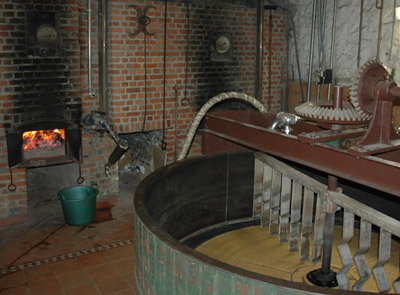What’s it take to brew a beer that wins in the experimental category at the World Beer Cup or Great American Beer Festival?
“That experimental category is really, from a brewer’s perspective, the most exciting one to win,” said Chuck Skypeck of the Tennessee-based Boscos brewpub chain. His experimental beers have twice won gold at GABF. “It’s really looking at experimentation and innovation. That’s really at the heart of experimental brewing.”
The matter came up in a story from the News Tribune in Tacoma, Wash., about Wallking Man Brewing in western Washington. Walking Man’s Bloot Voeste Bruin captured gold in the experimental category at the 2006 WBC.
Brewer Bob Craig innoculated Bloot Voeste Bruin with Kombucha to get fermentation rolling.
It (Kombucha) looks like a Silly Putty mushroom. It’s a fermented mass of yeast and bacteria that grows on a mixture of black or green tea and sugar. Kombucha dates to ancient China and Russia. Some people believe kombucha wards off cancer and everyday ailments. Others say it may cause liver damage.
Available in tea and soft drinks, kombucha sucks the saliva from your cheeks faster than a mouthful of aspirin and lime.
Bloot Voeste Bruin isn’t all that outlandish a beer. It took its inspiration from Duchess de Bourgogne, a popular Flemish red ale. And Craig shouldn’t be viewed as a brewer of only oddities. His hop-driven beers quickly established a loyal Northwest following and Walking Man IPA also captured gold at the World Beer Cup.
